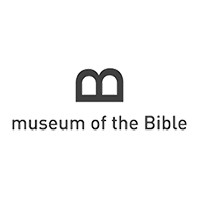World-class collection illuminates the Bible’s rich history in North America
WASHINGTON — Museum of the Bible has acquired the Steinbock Collection, one of the largest and most comprehensive private book collections in the United States. Amassed over decades by Dr. Ted Steinbock, a radiologist in Louisville, Kentucky, the collection of more than 14,000 texts provides a window into the Bible’s impact from Martin Luther to Martin Luther King, Jr., with special emphasis on its rich history in North America.
“Museum of the Bible is proud to be the future custodian of the Steinbock Collection,” said Anthony Schmidt, senior curator at Museum of the Bible. “The fascinating treasures within this collection will allow the museum to explore even more topics in our exhibitions and public programming that will interest our guests.”
While the scope of the collection is wide, it is especially strong in the realm of Puritan history, with texts such as Anne Bradstreet’s “The Tenth Muse Lately Sprung Up in America” (1650), Cotton Mather’s “Magnalia Christi Americana” (1702) and Jonathan Edwards’ “A Faithful Narrative of the Surprising Work of God in the Conversion of Many Hundred Souls in Northampton” (1737). First editions of Bartolomé de las Casas’ seminal works and rare publications by other notable figures such as John Eliot and Joseph Francois Lafitau provide insight into the history of Christian missions. Also included are significant works related to the Bible’s role in the American Revolution, such as a collection of Revolution-era sermons highlighting how the clergy helped stoke the flames of revolution, and others related to the Bible’s role in abolitionism and African American history.
A large portion of the Steinbock Collection also relates to the history of science, medicine, and religion. In addition to Galileo’s “Sidereus Nuncius” (1610) and Isaac Newton’s “Opticks” (1704), the collection features lesser-known works such as Robert Boyle’s “Some Considerations Touching the Style of the Holy Scriptures” (1675). Many of the texts help document the reception of European science in the American colonies, including Benjamin Franklin’s “Experiments and Observations on Electricity” (1751).
“Visitors to the museum will be able to view one of history’s most influential books on human anatomy,” said Jeff Kloha, chief curatorial officer at Museum of the Bible. “‘De Humani Corporis Fabrica’ was penned by 16th-century Flemish physician Andreas Vesalius. Guests can also explore texts like Benjamin Franklin’s ‘Some Account of the Pennsylvania Hospital,’ Oral Roberts’ ‘Healing Waters,’ Cotton Mather’s works on smallpox inoculation and John Wesley’s ‘Primitive Physick.’”
Museum of the Bible’s acquisition will provide scholars and the public greater access to its rich resources through exhibitions, educational programs and research initiatives. Visitors will be able to view texts from the Steinbock Collection in the Bible in America exhibit gallery.
More information on Museum of the Bible is available here.

